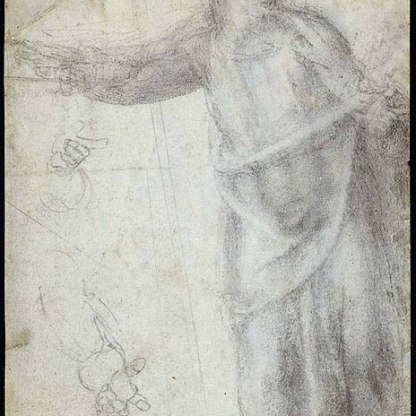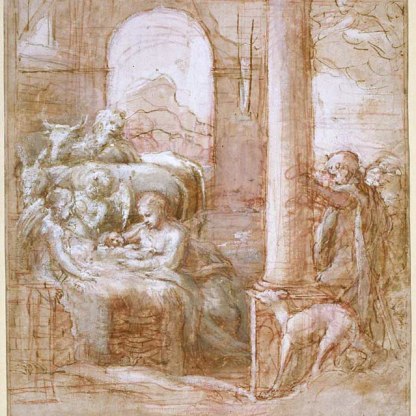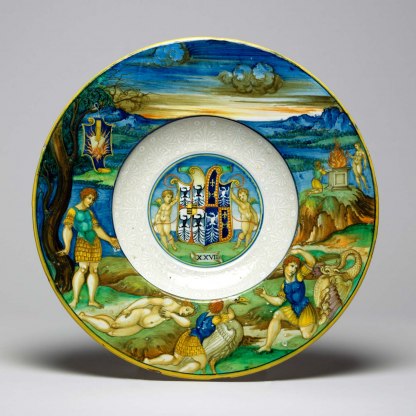The Nativity
The story of Christ's birth in a stable in Bethlehem, during a Roman census, is probably the most familiar of all the stories from his life. It is perhaps surprising then that the Bible itself says so little about the event. Only two of the four Gospels mention Christ's birth at all. Luke gives the fullest account at 2, 1–20. He tells us that Mary 'brought forth her firstborn son, and wrapped him in swaddling clothes, and laid him in a manger, because there was no room for them in the inn'.
Luke goes on to describe the appearance of an angel to shepherds at night, who announces that 'unto you is born this day in the city of David a Saviour, which is Christ the Lord'. The shepherds then go to worship the child.
Matthew, 2, 1 - 12 tells of 'wise men from the east who follow a star that leads them to 'the king of the Jews'. When they find Jesus, 'in a house', they present him with gifts of 'gold, frankincense and myrrh'.
These sparse accounts were elaborated by early Christian writers, and particularly expanded upon in the middle ages. In the fourth century CE, the first Christian emperor, Constantine built a magnificent church in Bethlehem to commemorate the birth of Christ, and this Church of the Holy Nativity became an important site of pilgrimage.
Particularly influential upon artists was an account of the Nativity written by the fourteenth-century St Bridget of Sweden who, on a pilgrimage to Bethlehem, experienced a vision:
when I was present by the manger of the Lord of Bethlehem, I beheld a virgin of extreme purity, well-wrapped in a white mantle and a delicate tunic, through which I clearly perceived her virgin body – with her was an old man of great honesty, and they bought with them an ox and an ass. These entered the cave and the man, having tied them to the manger, went outside and bought to the virgin a burning candle; having attached this to the wall he went outside, so that he might not be present at the birth. Then the virgin pulled off the shoes from her feet, drew off the white mantle that enveloped her, removed the veil from her head, laying it by her side, thus remaining in her tunic alone, with her beautiful golden hair falling loosely down her shoulders. Then she produced two small linen clothes and two woollen ones, of exquisite purity and fineness, that she had brought, in which to wrap the child who was to be born, and when all this was prepared, the virgin knelt down with great veneration in an attitude of prayer, and while she was standing thus in prayer, I saw the child in her womb move and suddenly in a moment she gave birth to her son, from whom radiated such an ineffable light and splendour that the sun was not comparable to it.
Other highlight objects you might like
Other pathways and stories you might like
Sign up to our emails
Be the first to hear about our news, exhibitions, events and more…





